Investing
Got $1000? Buy and Hold These Dividend Stocks Forever

Published:
Last Updated:

24/7 Wall Street Insights
There’s a Wall Street saying among traders that goes something like this:
“If you sell a stock within a week and only lose a point, that’s a good trade.
If you are still holding the stock and it’s down 5 points, you’ve made an investment.”
Of course, traders are looking for quick profit, which is a different mindset from investment. Investment is focused on long term growth and capital appreciation. The success of investment gurus like Charlie Munger and Peter Lynch have long extolled the “buy and hold” method of investment. The key is to find the right selection of stocks for the duration.
For those who are new to the equities market and are looking for a place to start, S&P 500 companies offer a modicum of risk mitigation. This is due to their proven performance in generating sufficient revenues and profits to warrant S&P 500 inclusion. They are also culled from a wide enough range of industries to offer coverage of any sector category of preference.
Entry level points are of less importance for optimum “buy and hold” stocks than with stocks expected to make a move that would create a good buy/sell trade. Investors buying on dips against the overall trend is probably a good general strategy. These securities are ostensibly “blue chip” companies that are well known names with long histories, strong and consistent growth trajectories, and are dividend paying. Dividends with a record of dependable increases are usually a good indication of consistent earnings growth.
24/7 Wall Street has a mammoth database of dividend stocks. It has published countless articles that showcase different ones to suit all ranges of risk tolerance and industry preference. For as little as a $1,000 investment, each of these stocks has shown a track record of potentially becoming “multibaggers”. This was a term coined by Fidelity Magellan Fund’s Peter Lynch, referring to stocks that could triple, or further multiply your initial investment. Thanks to the adoption of decimal priced trading during the 1990s, obtaining fractional shares is no longer unusual. Therefore, even under 10 shares can still deliver the same percentage of upside appreciation as larger share blocs. Prices are based at market close at the time of writing.
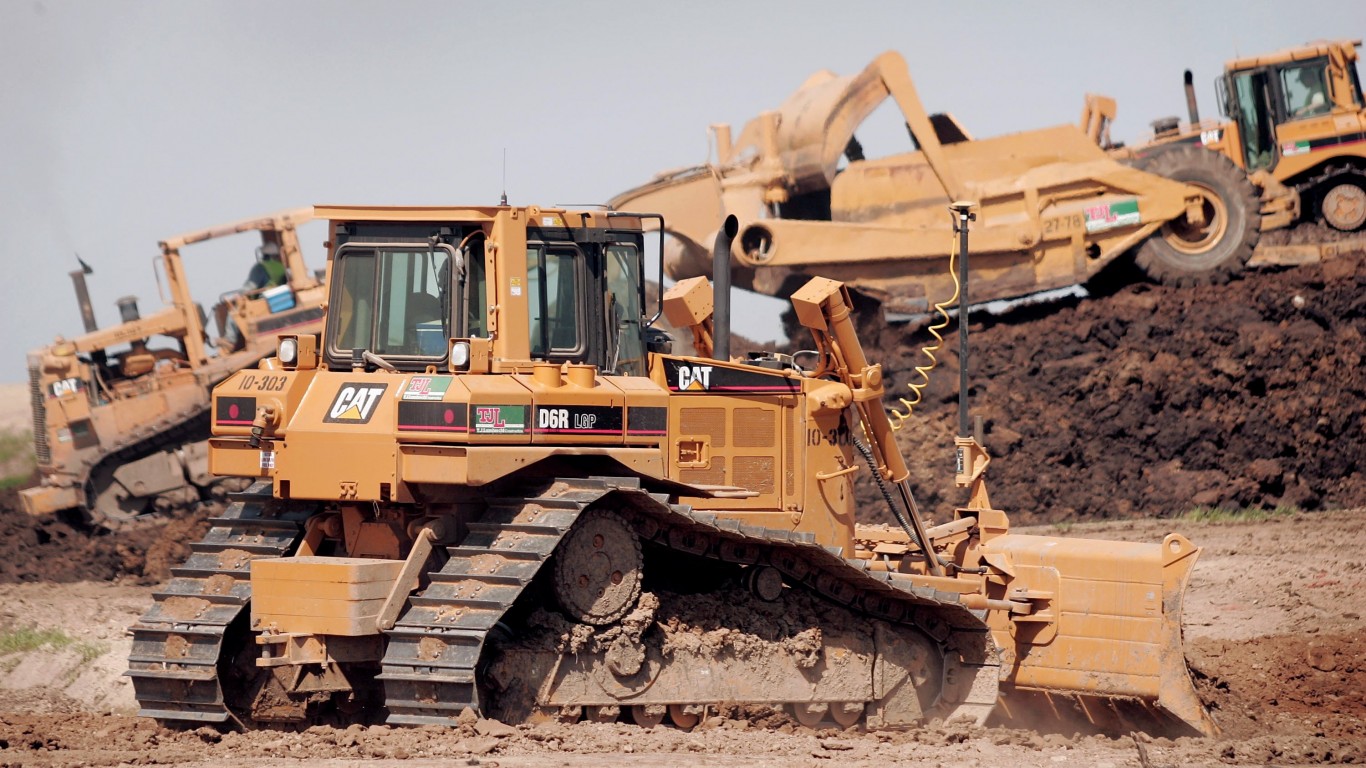
Stock: Caterpillar, Inc. (NYSE: CAT)
Shares for $1,000: 3
Yield: 1.75%
ROI for the past 10 years: 199.3%
Construction, mining, infrastructure (road and highway fabrication), locomotives and other activities requiring heavy machinery with earthmoving capabilities or big engines all turn inevitably to Caterpillar, Inc. As the world’s largest heavy equipment manufacturer, Caterpillar bulldozers, excavators, tractors, pavers, locomotives, etc. have become ubiquitous in most industrialized nations. Additionally, Caterpillar also makes a wide range of support equipment, such as engines, compressors. drive trains, soil compactors, etc.

Founded in 1925, Irving, TX headquartered Caterpillar was a result of a merger between a pair of tractor builders: Holt Manufacturing Company and the C.L. Best Tractor Company. Towards the end of the 19th century, Holt’s heavy steam engine machines would sink in the mud of San Joaquin Delta in CA. Coming up with the idea of using wooden slats with chains to replace the huge wheels turned out to deliver much needed traction to be able to maneuver. Founder Benjamin Holt managed to obtain the patent for a steel plate track from UK engineering and machinery manufacturer Richard Hornsby. Holt then patented the “continuous track” in 1907, which is still the underlying operation principle behind many of Caterpillar’s current machines. Holt tractors would be used in WWI for transport over rough terrain, and its continuous track design would become crucial for developing the first military tanks.
After years of costly lawsuit battles over patent and trademark infringements, rivals Holt and Best merged to form the Caterpillar Tractor Company. The “caterpillar” name came from the caterpillar-like movement of the continuous track transport that both WWI soldiers and Holt’s company photographer noted.
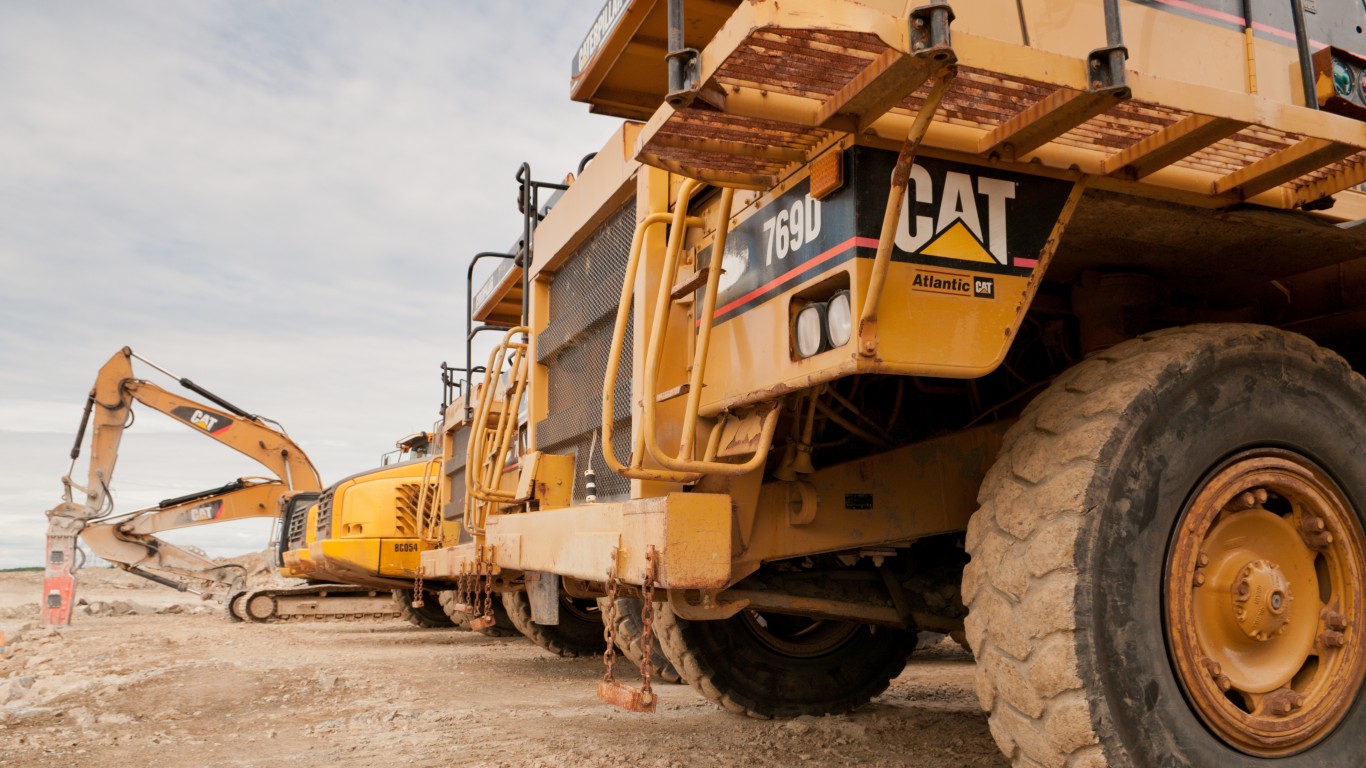
In the US, Caterpillar dominates the construction industry with 13% market share. One hallmark of a “blue-chip” stock is that it can maintain its leadership in an industry through savvy management always keeping its eye on the bottom line. In Caterpillar’s care, it is expanding its Large Engine Center in Lafayette, Indiana. The $725 million project will increase production capacity and efficiency, improving margins and profitability. This would build upon its 2023 financials, which reported year over year 12.84% revenue growth, 54.14% net income growth, and a 59.18% EPS increase.
The 2021 bipartisan $1.2 trillion Infrastructure Bill passed by Congress was a major piece of legislation. A number of analysts believe Caterpillar will be the primary future beneficiary of it. Therefore, its profit margins and growth may continue for the next few years, purely on domestic infrastructure demand. Caterpillar has appeared in past 24/7 Wall Street articles on numerous occasions.

Stock: JP Morgan Chase & Co. (NYSE: JPM)
Shares for $1,000: 5.2
Yield: 2.37%
ROI for the past 10 years: 239.96%
With roughly $4 trillion in assets under management (AUM), JP Morgan Chase & Co. is the #1 largest US bank and #5 globally. Based in New York, it bears the name of finance legend J.Pierpont Morgan and Chase Manhattan Bank, which traces back to 1799 and is the oldest legacy banking institution in the JP Morgan Chase umbrella.
As an international financial services leviathan, JP Morgan Chase has a long history tied to that of the US as well as to world history. This includes economic market crashes, wars, politics, and many other events. 24/7 Wall Street has covered JP Morgan Chase & Co. extensively in past articles.
Taking Q1 2024 into account, JP Morgan Chase is making up for the loss of service fees from Zelle, Venmo, and other digital fund transfer platforms with investment banking business. It reported $2 billion in IB fees, a 21% increase from Q1 2023. Equity underwriting fees rose 51% and debt underwriting jumped 58% in the same period..
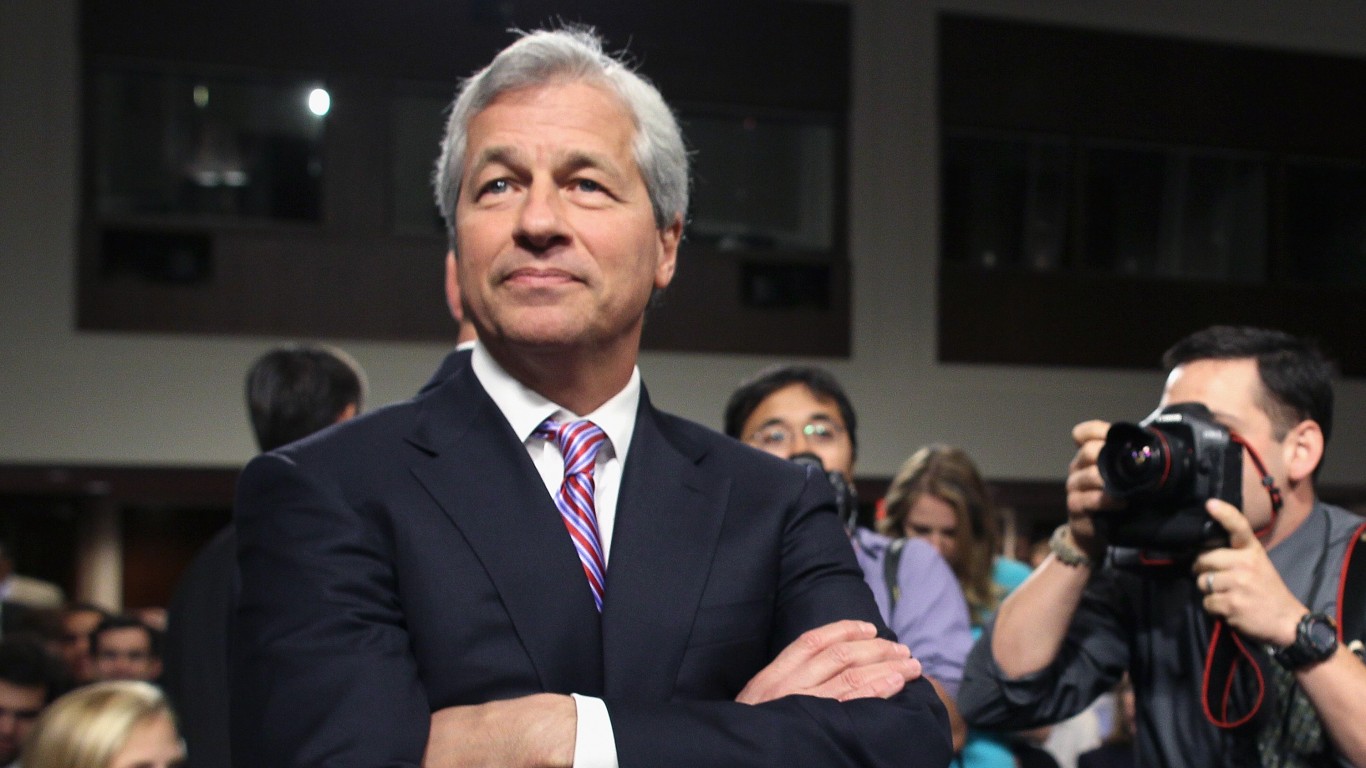
Looking at the future, JP Morgan Chase announced its foray recently into the AI space with IndexGPT. IndexGPT is intended for use with cloud computing and machine learning engagement to customize investment selection suggestions for bank clients.
Additionally, JP Morgan Chase is one of a handful of US banks that has the portfolio wherewithal to comply with Basel IV international banking requirements. CEO Jamie Dimon has complained on numerous occasions about the higher fees and restrictions on lending and other services that would be impacted. Nevertheless, Basel III noncompliance can force the Federal Reserve to shut down US banks that cannot meet the necessary minimum leverage ratio levels. Moody’s has published best practices for compliance on these rules, which must be completed by all US banks conducting international business before July 1, 2028.
Given that a 2014 investment in JP Morgan Chase stock would now be up nearly 300%, its future prospects as a long term investment continue to remain solid.

Stock: General Dynamics Corp. (NYSE: GD)
Shares for $1,000: 3.4
Yield: 1.95%
ROI for the past 10 years: 144.1%
When it comes to the highly specialized world of military contractors, a list of those that provide state-of-the-art equipment for land, sea, and air would contain few names. General Dynamics Corp., the 5th largest US military contractor by total sales, would head that list. 24/7 Wall Street has featured coverage of General Dynamics in a number of previous articles.
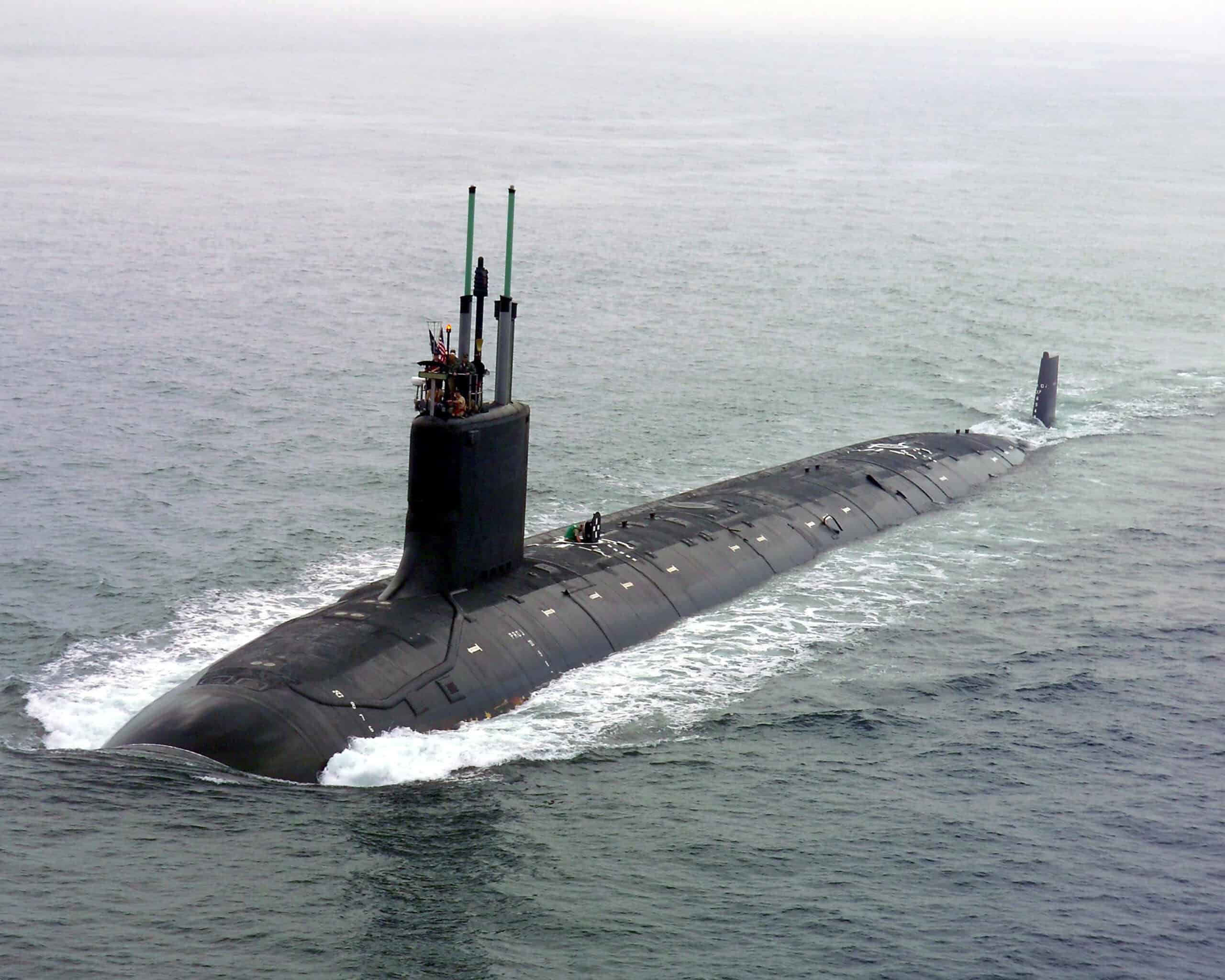
Founded in 1899 and based out of Reston, VA, General Dynamics’ predecessor was The Electric Boat Company, which developed the first modern naval submarine, and sold them to the US Navy in 1900. The relationship with the maritime branch of the US armed services continues to this day. General Dynamics supplies the nuclear-powered, missile equipped Virginia and Columbia class submarines, as well as others. It also makes the Arleigh Burke class guided missile destroyers.
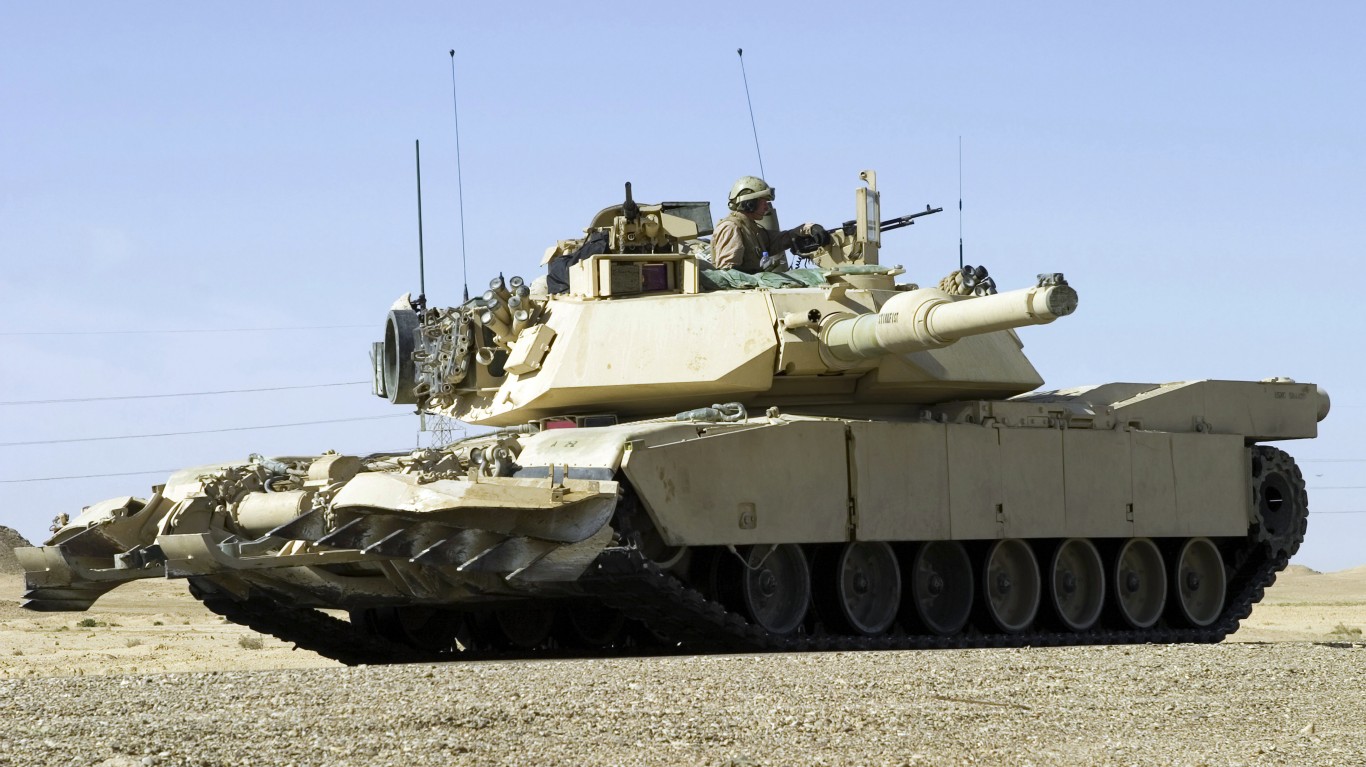
For surface operations, General Dynamics’ M1 Abrams tanks, Light Armored Vehicles (LAV), Howitzers, Strykers, Wolverine Assault Bridges, and Expeditionary Fighting Vehicle (EFV) amphibious assault vehicles have all contributed heavily to US defense platforms. Other land based tactical transport vehicles for weaponry and personnel, mobile launchers for missiles, etc. would also fall into this category.

Involvement in Aerospace is what prompted a name change from “The Electric Boat Company” to “General Dynamics”. Aviation projects initiated in Canada, when underperforming Canadair was acquired by Electric Boat. This led to a number of Cold War-era sales to the Royal Canadian Air Force transport, fighter, and patrol aircraft prior to that division being sold in the 1970s to Bombardier. During that same period, Convair, which made bombers for the US Air Force during WWII, was also acquired for US aviation projects.
General Dynamic would proceed to collaborate with Grumman (before its merger with Northrop) to develop the F-111 tactical fighter, which served as the prototype for Grumman’s subsequent F-14 Tomcat success, which was showcased in the first Tom Cruise Top Gun movie.
General Dynamics would go on to its own success with the F-16 Fighting Falcon. The F-16 has become the world’s most common fixed-wing military aircraft, with 2,145 F-16s in operation as of the end of 2023.
Additionally, General Dynamics also has the following divisions:

Stock: The Hershey Company (NYSE: HSY)
Shares for $1,000: 5.4
Yield: 2.93%
ROI for the past 10 years: 87%
Longtime rivalries often take on the persona of clan feuds. For example, The Boston Red Sox and New York Yankees have been head-to-head baseball competitors to the point of fanaticism. The century-long vitriolic rivalry between The Hershey Company and Mars Incorporated shares many of those same aspects in what has been coined, “The Chocolate Wars.”
According to Statista, US consumers eat roughly 3 billion kilos of chocolate per year. The roughly $53.5 billion US chocolate market continues to grow, and not only do US consumers eat an average of 9 chocolate kilos each, but the US is also the leading global importer of chocolate and chocolate products. While Hershey apparently has an edge in the US market with a roughly 33% market share vs 27% for Mars, Mars is the largest global chocolate company in revenues when overseas sales are added to the equation. Although Mars’ Dove Bars register 90% brand awareness, Hershey’s and its Reese’s Peanut Butter Cups and Kit Kats all took the top slots for chocolate US favorites, with Mars’ Snickers coming in fourth place.
The Hershey and Mars rivalry has led to some of today’s most popular chocolate candy brands. Mars’ M&M’s were created as a response to the army giving a contract to Hershey for a heat resistant chocolate bar. Hershey’s popular Mr. Goodbar chocolate with peanuts led to Mars’ responding with Snickers.
As Mars Incorporated is privately owned, Hershey is the stock play for investors who wish to invest in the US chocolate arena. The company has been featured in past 24/7 Wall Street articles.
The Hershey Company is located in Hershey, PA and was founded by Milton Hershey in 1894 as a caramel company. Milton Hershey soon switched over to chocolate after creating a milk chocolate recipe that was less dependent on milk quality. By 1900, the company began selling Hershey chocolate bars, followed several years later by Hershey chocolate Kisses, both of which are still sold today. The company went public on the NYSE in 1927, which makes it 3 years shy of its centennial as a public company.
Milton Hershey also founded Hershey Park in 1906, which continues to the present day as a family entertainment amusement park attraction. With 14 roller coasters, Hershey Park also showcases Hershey chocolate making in its open view small factory.
Since then, Hershey has continued to expand within the global confectionary space, which is expected to reach $419.76 billion by 2032.

Unlike the other stocks listed in this article, Hershey’s last 12 months have been a pull back, caused by the overall commodity price leap of cocoa beans. Fluctuating rainfall has reduced bean supply, which jumped from $2,500 MT to $4,200 MT. From 2014-2023, Hershey stock rose from $96 per share to $260.91, an over 150% gain. However, it has since fallen back to its present level at the time of this writing, which is $183-185.
On the positive side, Hershey reported a 100% verified cocoa bean supply chain from Ivory Coast and Ghana for 2025. The company is making efforts to ensure its sustainability and good relations with farmers, as per its latest ESG report.
Despite the sell off dip, which some analysts believe is a buying opportunity, Hershey continues to increase both its EPS and dividend. The current dividend is up 23% over 2023. Over the past 5 years, Hershey has increased its dividend 5 times. This averages out at 12.12% per annum.
Over the past five years of share appreciation, Hershey’s compound EPS growth was 14%, double the annual increase in share price. Its total shareholder return (TSR) calculation, when dividends are included, was 53%.

The Charlie Munger and Peter Lynch philosophy of finding the right stocks to hold forever is not foolproof. News and market events can upend some companies that would normally weather most storms, due to new technologies or management issues. Even popular retailer Woolworth, a Dow Stock once upon a time, eventually closed its doors in 1997, with only an Australian branch still existing publicly.
Nevertheless, history and statistics are on the side of the “buy and hold” method for a large number of stocks where the underlying businesses are solid and continue to grow. Of course, one should regularly monitor news and other events that could impact these companies just like any others that might be in a portfolio. The liquidity of the stock market allows for swapping out stocks that may falter with alternative ones possessing equal capital appreciation potential. Buy and hold principles serve as an excellent nest egg platform for families, if managed properly.
Start by taking a quick retirement quiz from SmartAsset that will match you with up to 3 financial advisors that serve your area and beyond in 5 minutes, or less.
Each advisor has been vetted by SmartAsset and is held to a fiduciary standard to act in your best interests.
Here’s how it works:
1. Answer SmartAsset advisor match quiz
2. Review your pre-screened matches at your leisure. Check out the advisors’ profiles.
3. Speak with advisors at no cost to you. Have an introductory call on the phone or introduction in person and choose whom to work with in the future
Thank you for reading! Have some feedback for us?
Contact the 24/7 Wall St. editorial team.